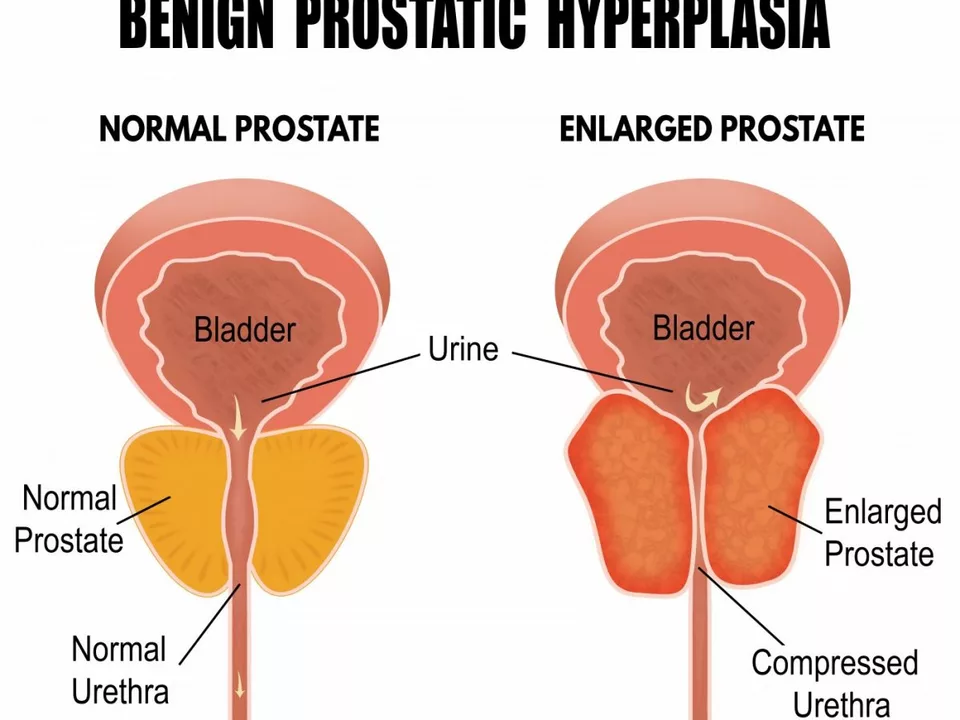Enlarged prostate (BPH): real signs, simple fixes, and treatment choices
Half of men over 50 have an enlarged prostate, and it can mess with sleep, mood, and daily life. If you’re waking up at night, rushing to the bathroom, or feeling like you never fully empty your bladder, that could be benign prostatic hyperplasia (BPH). The good news: many symptoms can be eased with simple habits or medicines.
What to watch for: weaker urine stream, dribbling, urgency, frequent nighttime trips, and a feeling of incomplete emptying. If you suddenly can’t urinate, have fever, or see blood in urine, get urgent care.
Quick actions you can try today
Try these practical steps before stressing over tests or pills. They help many men and are easy to start.
- Time your fluids: cut down on drinking two hours before bed and sip steadily during the day rather than gulping at once.
- Cut back on caffeine and alcohol: both can raise urgency and nighttime bathroom trips.
- Double void: after peeing, wait 30–60 seconds and try again to help empty the bladder better.
- Avoid certain meds: some cold medicines and decongestants can tighten urinary muscles. Ask your doctor if any of your current drugs might worsen symptoms.
- Try pelvic floor exercises: simple Kegel exercises can strengthen pelvic muscles and reduce leakage or urgency over time.
Medical options and what to expect
If lifestyle changes don’t help, there are safe medical options you can discuss with your doctor. Alpha-blockers like tamsulosin and terazosin (Hytrin) relax the prostate and bladder neck to improve flow within days to weeks. They can lower blood pressure or cause dizziness in some men, so your doctor will review interactions and side effects.
5-alpha-reductase inhibitors (finasteride, dutasteride) shrink the prostate over months and may cut the long-term need for surgery. Expect sexual side effects in some men, and effects take longer than alpha-blockers.
Sometimes a combination of both is used for better results. When meds aren’t enough, minimally invasive procedures (UroLift, microwave or laser therapies) can reduce symptoms with shorter recovery than traditional surgery. For severe cases, transurethral resection of the prostate (TURP) or newer surgical options may be recommended.
Want more detail about specific medicines? We have practical articles, like the Hytrin (terazosin) guide that explains how it works, side effects, and tips for safe use.
Finally, track your symptoms before your appointment: note how often you urinate, if you leak, and how many times you wake at night. That helps your doc pick the right treatment fast. If you have sudden inability to urinate, fever, or bloody urine, seek emergency care right away.
Small changes can make a big difference. Talk to your doctor about which steps and treatments fit your health, medications, and lifestyle. You don’t have to accept poor sleep or constant rushing to the bathroom—there are real options that help.

